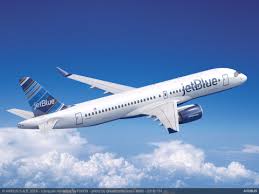NEW YORK (Reuters) – Airbus SE scored a key victory on Tuesday, with U.S. airline JetBlue announcing it would buy 60 of its A220-300 narrowbody jets, the first major order for the planemaker’s newly rebranded programme as its battle with rival Boeing Co intensifies.
Earlier on Tuesday, Airbus unveiled the new A220 name for the 110-seat to 130-seat model jets, previously called the CSeries under Canadian firm Bombardier, at a ceremony at the planemaker’s Toulouse facilities in France.
Airbus has taken majority control of the loss-making Montreal-based aircraft programme, with Bombardier and Quebec as minority partners. The deal closed on July 1.
“We feel the 220 is the perfect fit for our network, strategy and customer experience, and most importantly, for our owners,” JetBlue Chief Financial Officer Steve Priest said in a phone interview. “It really is the ideal aircraft to carry the momentum of our structured cost programme well into the next decade.”
The A220 will replace JetBlue’s existing fleet of 60 Embraer E190 aircraft, with those jets retiring beginning in 2020.
The A220’s triumph over Brazil’s Embraer SA sets the stage for a fierce competition between Airbus and Chicago-based Boeing Co in the narrowbody market. Both major planemakers have recently taken stakes in smaller rivals’ jet programs.
Boeing last week announced a tentative deal for a controlling stake in the commercial aircraft arm of Embraer under a new $4.75 billion (£3.57 billion) joint venture.
“It’s a very smart decision on JetBlue’s part because the A220 is an extremely flexible airplane,” Atmosphere Research Group fleet analyst Henry Harteveldt said, adding that it was a “completely new airplane” with a fuel efficiency that would allow JetBlue to carry “20 to 30 more passengers for free.”
The jets will be powered by Pratt & Whitney Geared Turbofan (GTF) PW1500G engines. Pratt & Whitney is owned by Connecticut-based United Technologies Corp.
JetBlue declined to outline the financial details of the deal.
The carrier said the new aircraft will be assembled at Airbus’ Mobile, Alabama, facility.
(Reporting by Alana Wise in New York and Tim Hepher in Toulouse, France; Additional reporting by Tracy Rucinski in Chicago, Editing by Rosalba O’Brien)

Photo from:


